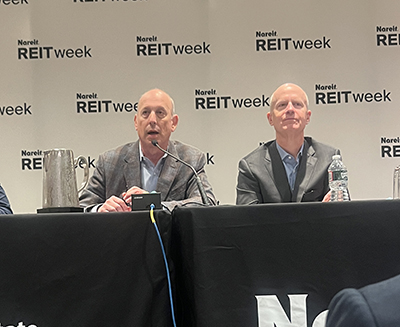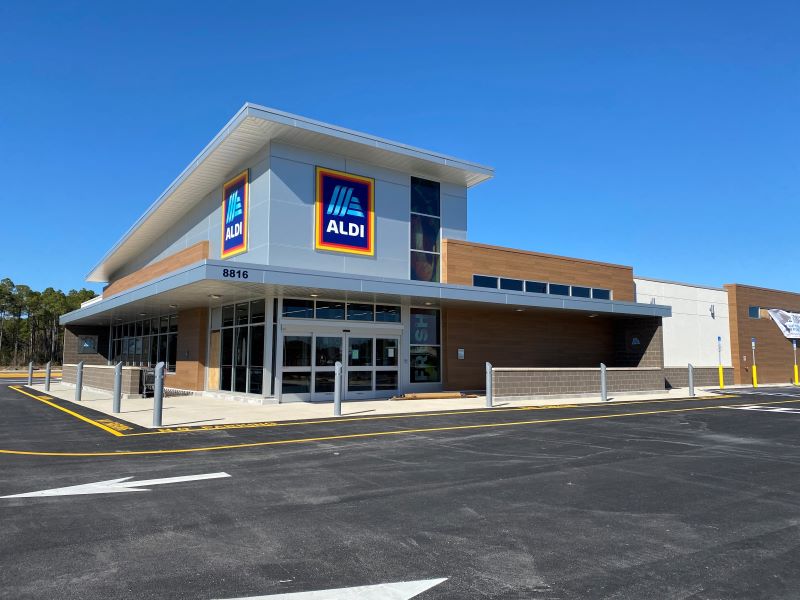REITWeek Special Report: The Resilience of REITs
Highlights from Nareit's annual investor conference.

When the going gets tough, it’s good to be a REIT. With macroeconomic uncertainties hanging over the CRE industry, it helps to own the best assets in your property class and to have the financial flexibility that comes with high creditworthiness.
That was one of the key takeaways from yesterday’s Nareit REITWeek investor conference. Despite tariffs, higher-for-longer interest rates and the threat of stagflation if not recession, REITs maintain their access to cost-effective capital and that’s helping them seize growth opportunities.
“REITs are really well-positioned,” Ed Pierzak, senior vice president of research for Nareit, told CPE yesterday. “Their operational performance has really been quite solid, and they’ve maintained really strong balance sheets.”
READ ALSO: Why Tariff Turmoil Doesn’t Shake Up Fitch’s View on REITs
The average cost of debt for REITs is 4.2 percent, Pierzak noted, while 90 percent of REIT debt is fixed-rate and 80 percent is unsecured.
Gavin Duckworth, managing director of hedging and capital markets for Chatham Financial, told CPE he sees more REITs taking the advantage of rate volatility—and their financial stability—to lock in lower rates in advance of their debt transactions when there is a dip in rates. (The 10-year Treasury slipped below 4 percent on April 4, for example.) Smaller private real estate companies with less credit strength than REITs may not have the flexibility to do such hedging.
“(REITs) want to control what they can control,” Duckworth said.
But REITs are seeking rate locks of shorter duration today. “With such high volatility, we see REITs highly attentive to the forward curve and where rates are going,” Duckworth noted.
During REITWeek, executives from roughly 90 REITs get 30 minutes to tell investors and analysts how they’re reaching operational goals and growing their companies despite higher rates, suppressed share prices and an uncertain economy. Here are some highlights from yesterday’s presentations.
Retail acquisitions are up
Phillips Edison & Co. CEO Jeff Edison was upbeat about opportunities to grow PECO’s portfolio of necessity retail properties. PECO is planning to acquire between $350 million and $400 million in new assets, and with “motivated sellers” having presented $7 billion to $10 billion of properties for sale at ICSC this year, Edison is confident the company will hit its target.
“We believe we’ll be at the high end of it,” Edison said. “If it opens up, we have a balance sheet that goes beyond our guidance.”
DOGE offers opportunities
While some find the cost-cutting work of DOGE haphazard, Easterly Government Properties finds it an “enormous tailwind,” according to President & CEO Darrell Crate.

That’s because, as the Federal government shrinks its footprint, it is also transitioning from owned space to leased space. Easterly Government Properties, which currently owns 92 buildings leased to the Federal government, is planning to be part of that transition.
“I challenge anyone to say they are better at this than we are,” Crate said.
The government is also thinking more “pragmatically” about who they choose for partners, Crate noted. Meanwhile, staff cuts and agency reorganizations will shorten the chain of command for real estate decisions.
“The government is now getting things done and done quickly, which is now important to them, and we are a partner of choice,” he said.
Office leasing holds up
BXP executives expect to grow FFO per share and increase their share price over the next couple of years through its strong leasing activity, which has actually “accelerated” post-tariffs.
“There is a lot of dislocation going on, but our leasing continues to move forward,” said Doug Linde, president & director.
BXP also has an active development pipeline—for example, its 290 Binney St. lab building project in Cambridge, Mass., is 100 percent leased to Astra Zeneca, and it is “pretty aggressively” selling non-producing assets.
In addition, the company is flexing its residential muscles. In a “unique one-off” situation, BXP made a preferred capital investment at 13 percent in a two-tower development at 290 Coles St. in Jersey City, N.J. That was “a good use of corporate capital,” according to CEO Owen Thomas. Meanwhile, the company has received entitlements to build 350 units in Cambridge, Mass.
Data centers’ long runway
The transition to cloud and AI will provide “long-term incremental demand” for data center companies, according to Andrew Power, CEO of Digital Realty, which owns an international portfolio of some 300 properties and has about 9 million square feet under construction.
The actual use cases for AI are still fairly low, Power said, since many of the solutions are still being built. But the company is not waiting around. “We are building infrastructure for the evolution of infrastructure over time,” he said.
And while the lion’s share of data center activity is happening in the U.S., there are ample opportunities to grow market share overseas. “No one wants all the AI infrastructure homed in the U.S.,” Power said.
Powering and cooling data centers is still a challenge. While technological advances are helping the industry move toward “pain point solution,” it is a long-term problem, Power said: “You are not going to see one quick fix. It is going to take us and the energy industry to innovate.”







You must be logged in to post a comment.